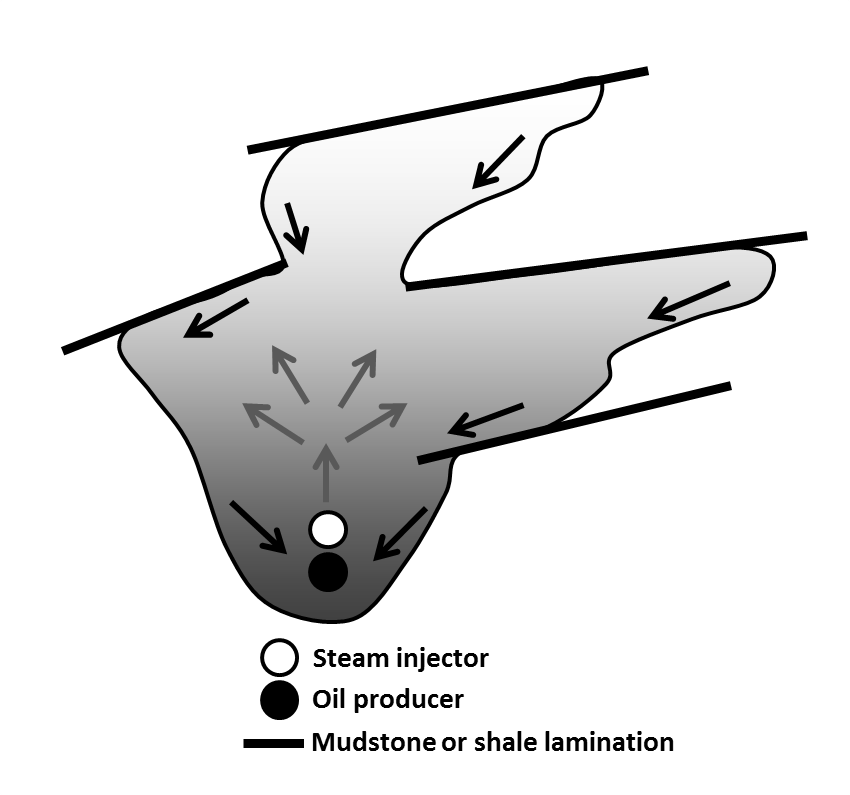SAGD
Authors: Sarah G. R. Devriese and Douglas Oldenburg
Editors: Sarah G. R. Devriese
Special Thanks
Thanks to the Society of Exploration Geophysicists for permission to reproduce figures and adapt text from:
Sarah G. R. Devriese and Douglas W. Oldenburg (2016). ”Feasibility of electromagnetic methods to detect and image steam-assisted gravity drainage steam chambers.” GEOPHYSICS, 81(4), E227-E241. https://doi.org/10.1190/geo2015-0451.1
Sarah G. R. Devriese* and Douglas W. Oldenburg (2015) Time-lapse three-dimensional electromagnetic inversion of growth-impeded SAGD steam chambers. SEG Technical Program Expanded Abstracts 2015: pp. 2842-2847. https://doi.org/10.1190/segam2015-5909921.1
The material presented here has been modified from the SEG-published version and is subject to the SEG terms of use and conditions. This case history was presented as a part of the SEG 2017 Distinguished Instructor Short Course.
Abstract

Fig. 484 A steam chamber that has irregularly grown due to heterogeneity. Figure modified from [Pea10]
Steam-assisted gravity drainage (SAGD) is a method for extracting heavy oil from the Athabasca oil sands in Alberta, Canada. This method uses steam to heat the oil, which then becomes mobile and can be extracted. The research investigated the applicability of different electromagnetic surveys to monitor steam chamber growth and focuses on geologic region in the Athabasca oil sands. EM surveys can be a useful tool, in addition to the other monitoring techniques, because steaming causes a change in the resistivity of the oil reservoir.
Citations
[DO16a] : Feasibility of electromagnetic methods to detect and image steam-assisted gravity drainage steam chambers
[DO15] : Time-lapse three-dimensional electromagnetic inversion of growth-impeded SAGD steam chambers